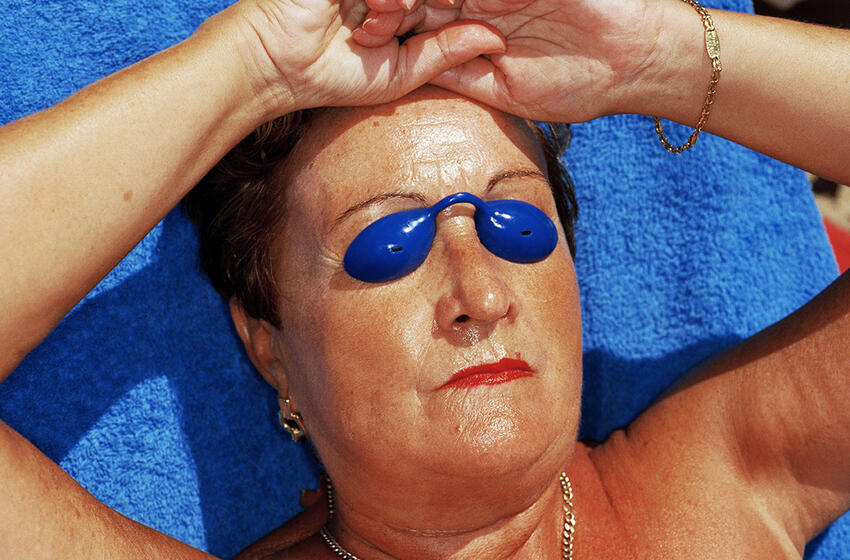Spring has bloomed also at MUDEC in Milan, where three exhibitions curated by 24 ORE Cultura await visitors at the start of 2024. Within a diverse cultural array, ranging from mainstream art embodied by Picasso to research-focused exhibitions like the one on tattooing, and contemporary pop art showcasing Martin Parr's solo show, here are the detailed exhibitions curated by 24 ORE Cultura available for visitors in the upcoming months.
"Martin Parr. Short&Sweet”, showcased at the MUDEC Photo space, features over 60 carefully curated shots selected by the artist. Alongside these photographs are installation elements and wallpapers that trace Parr's extensive career through his renowned projects. These projects exemplify his signature documentary style, capturing the social and cultural idiosyncrasies of the Western world, with a particular focus on Europe.
The exhibition begins with the "Non-Conformists" series, offering a raw and rhetoric-free photographic narrative. These black-and-white images, captured between 1975 and 1980, unveil an unprecedented, young and inspired Parr. The exhibition then transitions to his better-known colour series, starting with "The Last Resort”, a provocative and bitterly ironic portrayal of life on the beaches of Brighton. Following this is "Common Sense", a collection of photographs that cynically explore the artificial and superficial facets of consumerism. The exhibition also includes Parr's ongoing project centered on tourism, where he sheds light on the stark contrast between the idealized mythology of iconic destinations and the harsh reality tainted by mass tourism. In addition to tourism, the exhibition also delves into the theme of dancing, offering a glimpse into the vibrant energy that Parr captures on dance floors and the uninhibited expression of collective bodies.
The exhibition concludes with a subject that Parr has long grappled with: the beach. Featuring images from around the world, it offers a kaleidoscope of imagery portraying the undressed body on public display.
Open until 30 June 2024.
24 ORE Cultura extends an invitation to the public to explore Picasso's exceptional genius and profound connection to "primitive art”, tracing his intellectual reworking and the artistic legacy embedded in his works. This major exhibition project is specifically tailored for MUDEC, highlighting the mutual and continuous influence of cultures worldwide.
“Picasso. La metamorfosi della figura” arrives in Milan with over forty works by the Spanish master, comprising paintings, sculptures, as well as 26 drawings and sketches from preparatory studies, including the highly valuable Notebook no. 7 loaned for the exhibition by the Pablo Ruiz Picasso Foundation - Casa Natal Museum in Malaga.
The exhibition is curated by Malén Gual, curator of the Picasso Museum in Barcelona, and Ricardo Ostalé.
Crucially, all the major Spanish museums housing Picasso's most significant collections in his homeland, Spain, join him on this unique and unprecedented journey. This includes the Casa Natal in Malaga, the Picasso Museum in Barcelona, and the Reina Sofia Museum in Madrid, along with numerous private collectors.
With the support of the Picasso Administration, led by his daughter Paloma Ruiz-Picasso, and the heirs who have endorsed 24 ORE Cultura's exhibition project by confirming significant loans, the exhibition “Picasso. La metamorfosi della figura" thus effectively concludes the extensive 2023 celebration commemorating the 50th anniversary of the painter's death. This exhibition embodies a distinctly 'Spanish' identity in its project while presenting a 'universal' artistic vision of Picasso to the public.
The project also presents an opportunity to once again showcase after many years, at MUDEC, the "Femme nue" from the Museo del Novecento in Milan, a wonderful painting that served as a crucial precursor to Picasso's masterpiece "Les Demoiselles d'Avignon”, in dialogue with magnificent paintings of masks. In an interplay of mirrors and cross-references that spans from ancient times to the present, the chosen works of the Spanish master featured in the exhibition engage in dialogue with a collection of ancient sources, archaeological findings, and ethnographic artifacts.
The exhibition delves into the primitive to elucidate Picasso's deep-rooted connection to the past, while also examining the present to shed light on the evolution of contemporary painting. It explores how new generations of African artists, who have encountered the Spanish genius, have absorbed, reflected, and reinterpreted his artistic language and vision.
March, on the other hand, sees - again at MUDEC - the launch of a special, research-based exhibition. Starting 28 March 2024, the original exhibition project “Tatuaggio. Storie dal Mediterraneo”, curated by Luisa Gnecchi Ruscone and Guido Guerzoni in collaboration with Jurate Francesca Piacenti and with scientific advice from Museo delle Culture, will be showcased. The exhibition's Institutional Partner is Fondazione Deloitte.
A tattoo can serve as a message displayed to the world, an ornament that convinces or deceives us into believing we are unique and exceptional. It may symbolize a vow fulfilled or serve as a lighthearted memento, representing belonging or declaring independence, expressing love or mourning loss.
According to recent research findings, Italy leads as the nation with the highest number of tattooed individuals, with 48% of the adult population adorned with tattoos. Sweden closely follows with 47%, while the U.S. trails behind with 46%. This phenomenon represents a contemporary social and cultural trend, significantly characterizing us, partly due to an ancient tradition that remains relatively unknown.
From these social and cultural considerations arises MUDEC’s interest in delving deeper into the understanding of practices, rituals, forms, and expressions of tattooing found across ages and continents - from the distant past up to the present day. This exhibition project aims to explore tattooing from a historical, anthropological, and cultural perspective, beginning with its earliest irrefutable evidence found in the Mediterranean basin.
* Pictured: Martin Parr
Common Sense, 1995-1999
© Martin Parr/Magnum Photos
